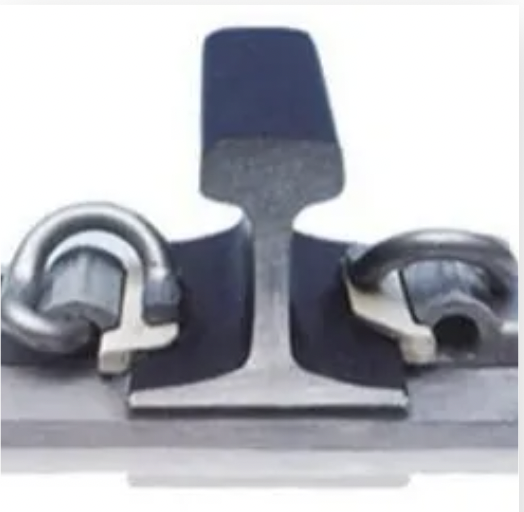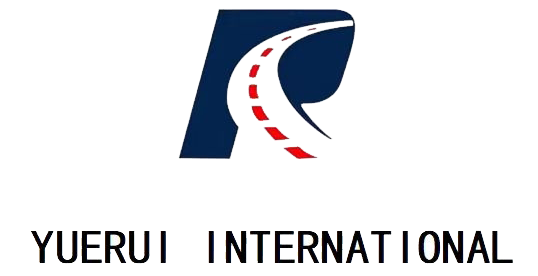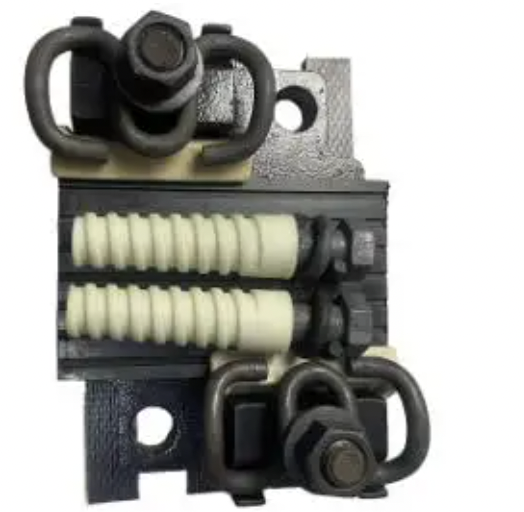The Critical Role of Railway Fasteners in Track Stability
How Conventional Fasteners Distribute Dynamic Loads
Conventional Railways Fastener are essential to maintaining railway track stability by securing rails to sleepers and distributing dynamic loads seamlessly. These fasteners absorb and distribute the forces generated by the movement of trains, thus playing a significant role in keeping the tracks in proper alignment. The engineering principles behind these fasteners ensure the structural integrity of the tracks, reducing the risk of deformation under substantial load. For instance, studies indicate that high-performance fasteners are effective in load distribution, enhancing the overall stability of railway tracks. By maintaining this stability, fasteners help prevent accidents and ensure a smooth and safe train journey.
Preventing Lateral Movement and Track Buckling
Fastening systems are vital in preventing lateral movement and track buckling, which are significant safety risks in railway operations. Properly installed fasteners significantly reduce lateral displacement during high-speed travel, as evidenced by numerous rail safety reports. Innovative fastener technologies have been developed to enhance their resistance to environmental factors like temperature fluctuations, moisture, and vibrations. These technological advancements help ensure that rails remain securely in place, thereby reducing the chances of misalignment and buckling, which can lead to derailments. Overall, these fasteners are an essential element in maintaining the safety and security of railway systems.
Anchor Bolts: The Foundation of Rail Security
Anchor bolts are a cornerstone of rail security, serving as the primary fixing elements that secure the track to its foundation. These critical components ensure maximum resistance against both horizontal and vertical forces, providing structural integrity and stability essential for safe rail operations. In heavy-haul rail systems where load intensity is particularly high, the quality and robustness of anchor bolts cannot be understated. Adherence to stringent manufacturing standards is critical to meet the requirements of these demanding applications, ensuring sustained performance and safety.
Spring Clips: Maintaining Consistent Clamping Force
Spring clips play an essential role in maintaining consistent clamping force over time, a necessity for any well-functioning rail system. They are ingeniously designed to compensate for wear and tear while accommodating rail expansion and contraction due to temperature fluctuations. This allows the rail to maintain its alignment, thereby preserving track integrity. By ensuring that the rail does not shift or become misaligned, spring clips help in reducing maintenance requirements and preventing potential derailments.
Rail Spikes: Traditional Grip for Wooden Sleepers
Rail spikes have historically been a staple in securing rails to wooden sleepers, offering a time-tested method of fastening. Their simple yet robust design has allowed them to provide reliable grip and stability throughout the development of the railway industry. Despite the advent of more modern fastening techniques, rail spikes remain relevant due to their ease of installation and cost-effectiveness. They are particularly valued in conventional rail systems where tradition and proven reliability align.
Fish Plates vs. Welded Joints: Connection Methods Compared
Fish plates and welded joints represent two contrasting methods of connecting rail sections, each with its unique benefits. Fish plates provide a flexible connection, allowing for easier installation and maintenance due to their detachable nature. In contrast, welded joints offer a more permanent solution, which can enhance track stability but may lead to complexities in maintenance and repairs. The choice between these methods often depends on specific usage conditions and maintenance capabilities, highlighting the importance of selecting suitable connection solutions for different rail scenarios.
Real-World Consequences of Fastener Failures
The Potters Bar Derailment: A Maintenance Case Study
The Potters Bar derailment is a poignant reminder of the severe risks associated with fastener failures. In this unfortunate incident, investigations highlighted the connection between insufficient maintenance and defective fasteners, which contributed to the tragedy. The findings from Potters Bar stress the importance of implementing rigorous inspection routines and ensuring that quality standards are consistently met, particularly where fasteners play a critical role in rail security. This case study underscores how imperative it is for rail systems to have robust strategies in place to prevent such disastrous failures.
Deutsche Bahn's Door Detachment Incident
The Deutsche Bahn door detachment incident serves as a stark illustration of the dangers posed by inadequate fastener integrity. Improper fastening was identified as a major factor that compromised passenger safety, as the lack of secure attachments led to parts detaching during transit. This incident highlights the ripple effects of fastener deficiencies, not just affecting stability, but extending to safety risks for passengers. It reinforces the necessity for stringent quality assurance measures and the implementation of advanced fastening technologies to mitigate similar risks.

Vibration-Induced Loosening Patterns
Research into vibration-induced loosening patterns has revealed that certain fastener designs are vulnerable to failure when exposed to prolonged vibrations from passing trains. These findings are crucial for rail maintenance practices as they inform the development of better fastening technologies. Understanding these patterns can help engineers design fasteners with enhanced durability, capable of withstanding constant vibrations. By addressing the weaknesses observed in current designs, the rail industry can improve its maintenance protocols, ensuring that fasteners remain secure under all operational conditions.
Maintenance Protocols for Conventional Fastening Systems
Traditional Visual Inspection Challenges
Traditional visual inspection, a widely used method, has certain limitations when assessing railway fastening systems. While it is simple and cost-effective, this inspection method often fails to identify subtle signs of wear and damage in fasteners, resulting in unnoticed risks that can escalate over time. Train operations managers must recognize these shortcomings to ensure comprehensive maintenance protocols are in place. Reliance on visual inspection alone can lead to oversight, which compromises railway safety and increases the likelihood of fastener failures.
Automated Eddy Current Detection Systems
Automated eddy current detection systems are revolutionizing fastener inspection in railways. By leveraging advanced technology, these systems offer superior detection capabilities that can identify early signs of wear and potential failures, which might otherwise go unnoticed by the human eye. The automation aspect reduces human error and significantly enhances inspection efficiency. As a result, rail networks benefit from improved safety standards, minimizing the risk of accidents related to fastener issues. Implementing such innovative systems is crucial for maintaining the integrity and reliability of railway infrastructure.
FAQ Section
What are conventional railway fasteners?
Conventional railway fasteners are components that secure rails to sleepers and help distribute dynamic loads generated by train movements, ensuring track stability.
Why are anchor bolts important in railway systems?
Anchor bolts are essential for rail security as they provide maximum resistance against horizontal and vertical forces, ensuring structural integrity and stability.
How do spring clips enhance track integrity?
Spring clips maintain consistent clamping force, allowing rails to expand and contract without shifting, thereby preserving track integrity.
What is the difference between fish plates and welded joints?
Fish plates are detachable and offer flexible connections, while welded joints provide a permanent solution enhancing track stability but may complicate maintenance.
What are the real-world consequences of fastener failures?
Fastener failures can lead to significant safety risks, as seen in events like the Potters Bar derailment and Deutsche Bahn door detachment incidents.
Table of Contents
- The Critical Role of Railway Fasteners in Track Stability
- Anchor Bolts: The Foundation of Rail Security
- Spring Clips: Maintaining Consistent Clamping Force
- Rail Spikes: Traditional Grip for Wooden Sleepers
- Fish Plates vs. Welded Joints: Connection Methods Compared
- Real-World Consequences of Fastener Failures
- Maintenance Protocols for Conventional Fastening Systems
- FAQ Section

